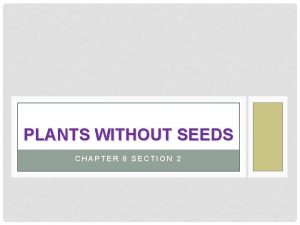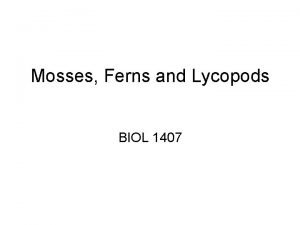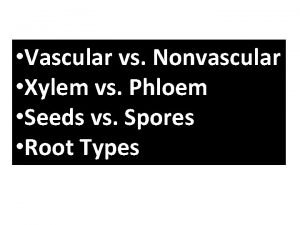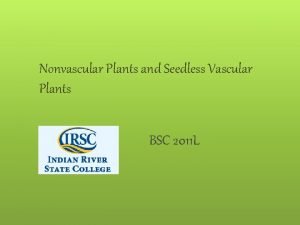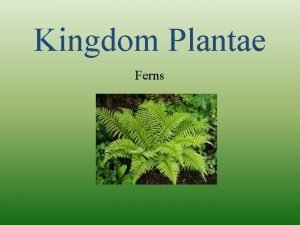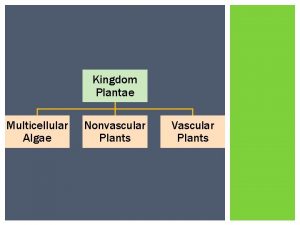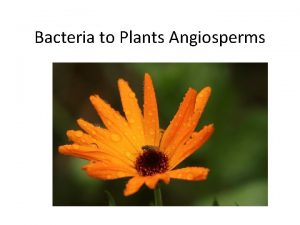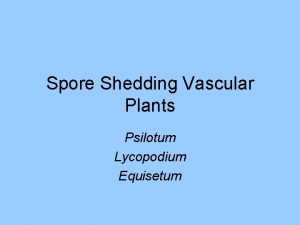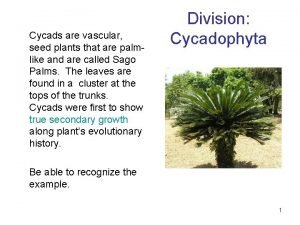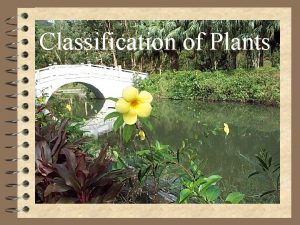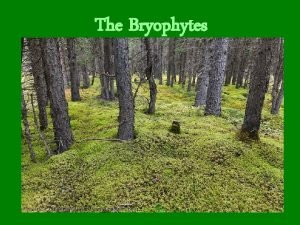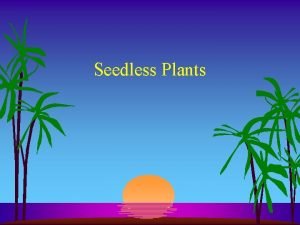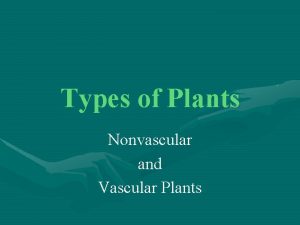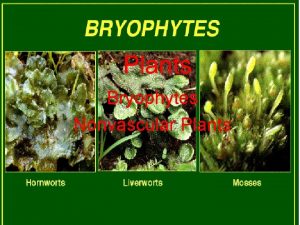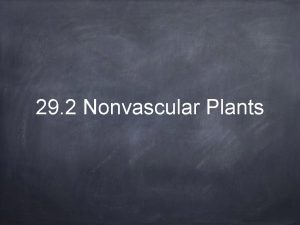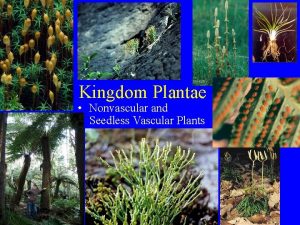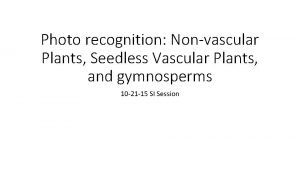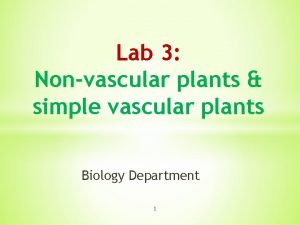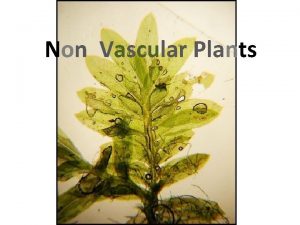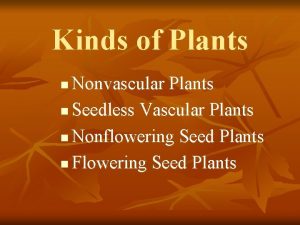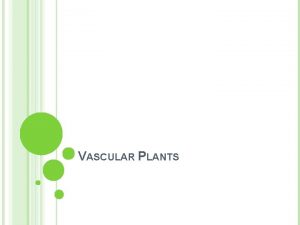Vascular and Nonvascular Plants Nonvascular Plants Do not















- Slides: 15

Vascular and Nonvascular Plants

Nonvascular Plants Do not have a vascular system (xylem and phloem). Water and nutrients simply move through the plants’ body cell by cell. A plant can get water this way as long as the plants’ body is no more than a few cells thick.

Mosses are Nonvascular Plants Mosses have a special storage area for water and nutrients. They do not grow very large. They do not have true roots, stems, and leaves. Mosses are actually made of many tiny, dark green plants.

Mosses Reproduce with Spores A spore is a single reproductive cell that is protected by a hard, watertight covering. Spores are small and can be transported through the air. The green moss plants that you are familiar with have grown up from spores.

Mosses Reproduce with Spores: How it Works The moss itself is the first generation. A clump of moss has both male and female reproductive structures. When conditions are right these structures produce sperm an egg. Fertilization can only occur if water is present. Tiny moss sperm can only move by swimming. (A layer of water left by rain is enough. This is sexual reproduction. ) The fertilized egg grown into a stalk with a capsule on the end-the second generation of the plant.

Mosses Reproduce with Spores: How it Works The stalk and the capsule grow from the female moss plant. Inside the capsule, the process of meiosis produces thousands of time spores. When the spores are released, the cycle can begin again. http: //www. coolschool. ca/l or/BI 11/unit 7/U 07 L 02. htm

Mosses can also Reproduce Asexually A small piece of a moss plant can separate and can grow into a new plant, or new plants can branch off from old ones. The genetic material will be the same of the parent.

Vascular Plants Have a vascular system (xylem and phloem) that moves water through the plant quickly and effectively. Because of this system, these plants can grow very large. These plants have roots stems and leaves.

Ferns are Vascular Plants Ferns were one of the first plants on earth with a vascular system. The roots of vascular plants, like ferns can branch out more because of the vascular system.

Ferns Reproduce with Spores The leaves of ferns, called fronds, have clusters on spores on the back of them. Ferns have a 2 part life cycle. Spores grow into tiny structures that lie very close to the ground (smaller than your thumbnail. )

Close up of Fern Spores

Ferns Reproduce with Spores: How it Works Within the structures that grow close to the ground are the sperm and eggs producing parts of the fern plant. These are the first generation of the plant. Like mosses, the sperm need water to swim to the egg. The second part of the fern life cycle is the plant with the fronds that grows from the fertilized egg. The fronds produce clusters, and cells within those cluster undergo meiosis and produce spores.

Ferns Reproduce with Spores: How it Works The spores when they are released, spread through the air. If conditions are right where the spores land, they will grow into a new plant and a new cycle begins. This is sexual reproduction. http: //www. harcourtschool. co m/activity/vascular. html

Ferns can also Reproduce Asexually New ferns branch off old ones, or pieces separate from the plant and grow.

Vascular Nonvascular Has a Vascular system yes no Has true roots, stems, and leaves yes no Uses spores to reproduce yes Can reproduce sexually yes Can reproduce asexually yes Can grow large yes no Has a 2 part life cycle yes Needs water to reproduce yes fern moss Write an example.
 Nonvascular plants
Nonvascular plants Non vascular plants
Non vascular plants Characteristics of club mosses
Characteristics of club mosses Lycopods
Lycopods Vascular vs nonvascular
Vascular vs nonvascular Anthiridium
Anthiridium Ferns
Ferns Is algae non vascular
Is algae non vascular Is a gerber daisy vascular or nonvascular
Is a gerber daisy vascular or nonvascular Coniferophyta vascular or nonvascular
Coniferophyta vascular or nonvascular Dipbot
Dipbot Are cycads vascular or nonvascular
Are cycads vascular or nonvascular Vascular and non vascular difference
Vascular and non vascular difference Seedless vascular
Seedless vascular Nonvascular plants phylum name
Nonvascular plants phylum name Nonvascular seedless plants
Nonvascular seedless plants


